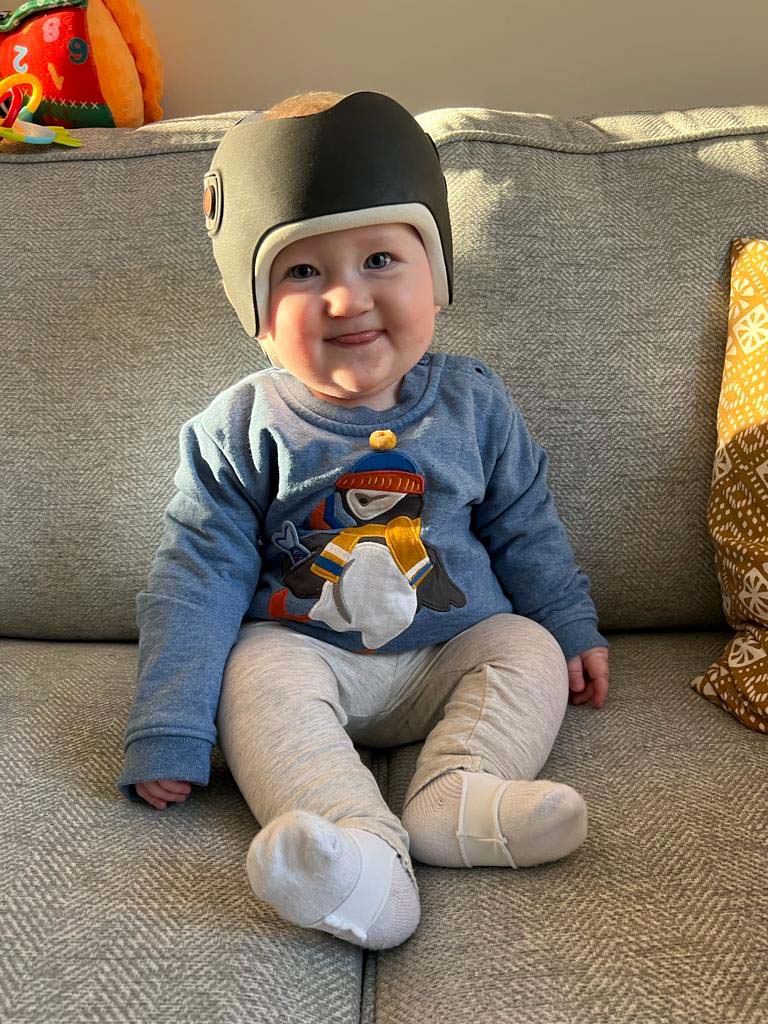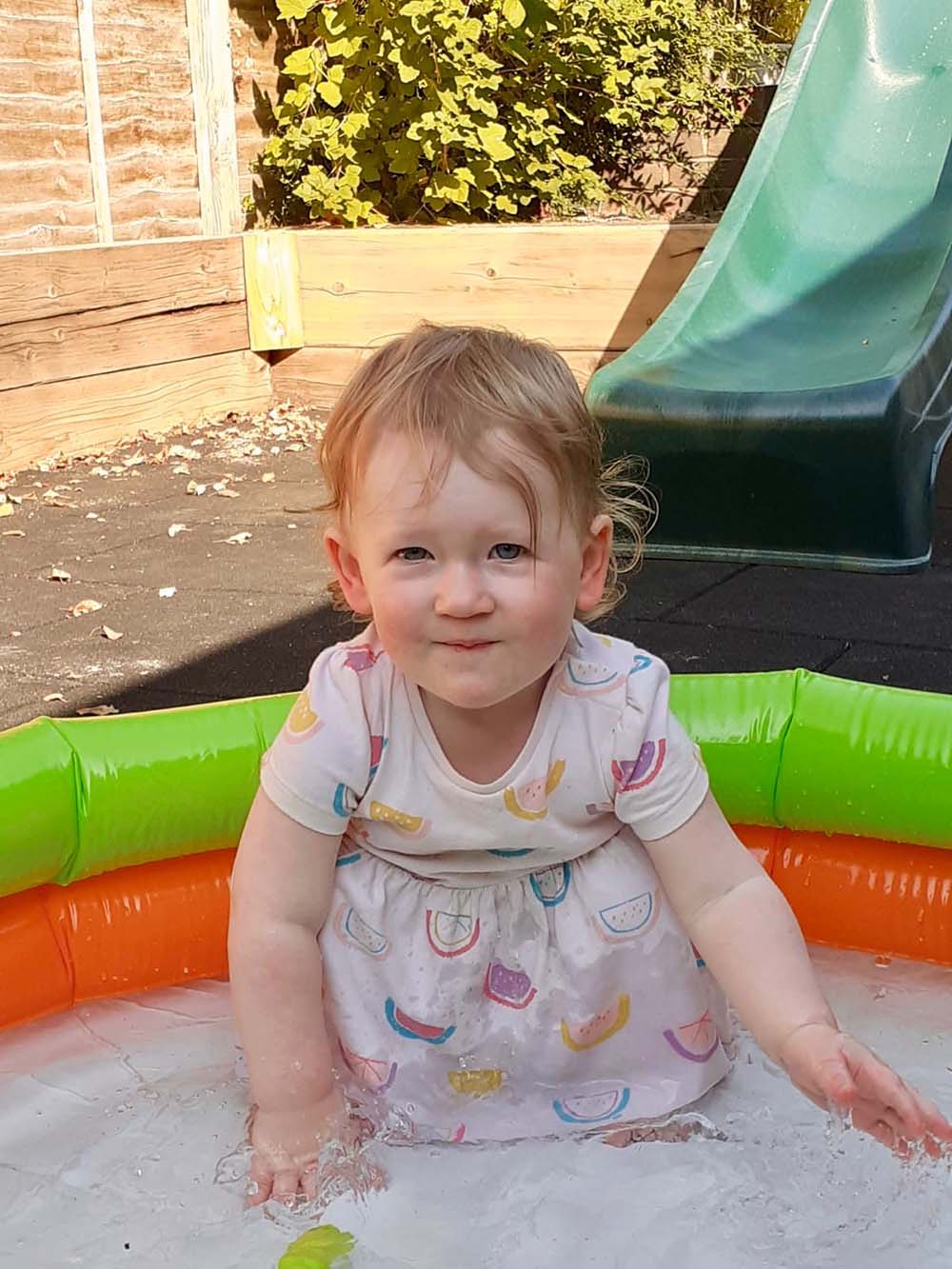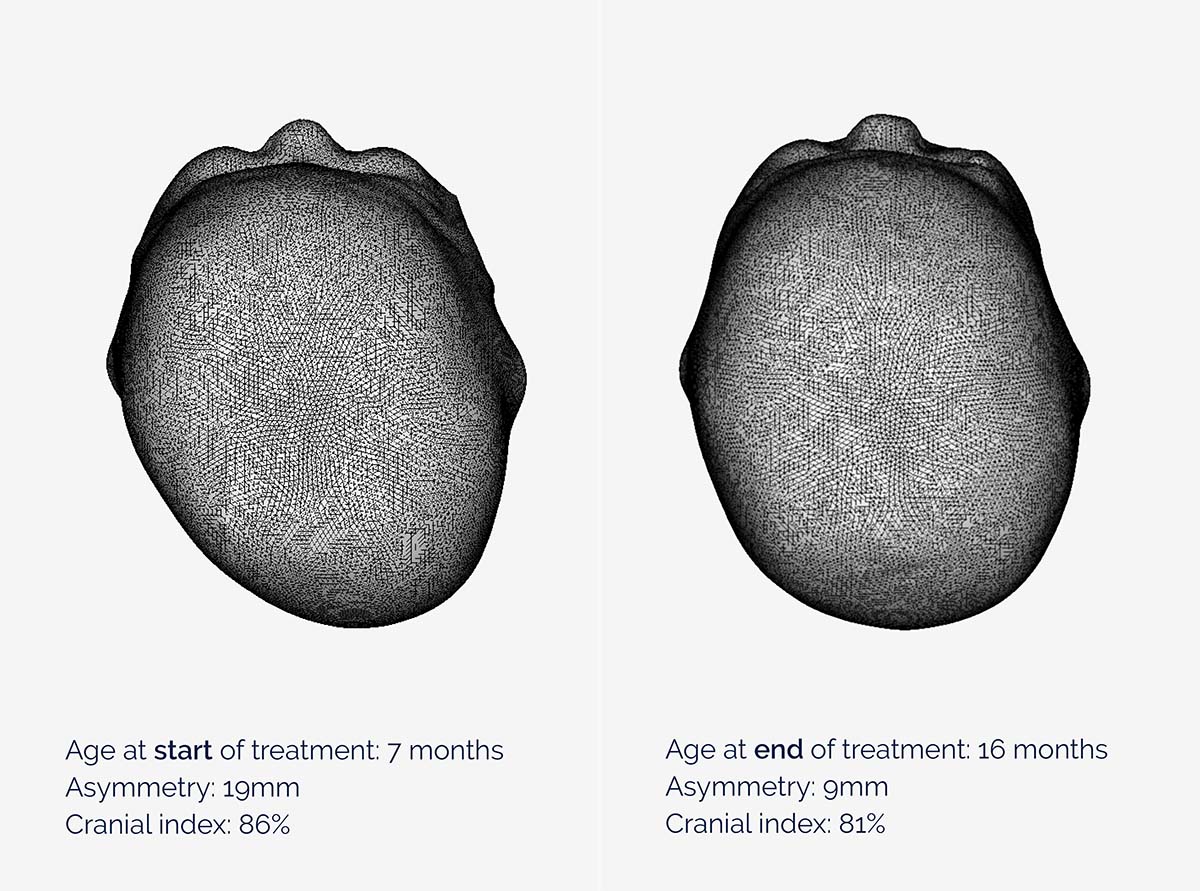
Amelia wearing the LOCband Lite cranial moulding helmet during helmet therapy
01 September 2024
Amelia was born five weeks premature. At about four weeks, her parents Graeme and Polly became concerned about her head shape. They spoke to their GP at the six-week check, and they were advised that it was nothing to be concerned about but to come back when Amelia was around three months old to review it.
They were concerned that Amelia was mainly sleeping with her head turned to the left and early on they found repositioning difficult as she would wake when she was moved. They returned to the GP at about three months, and again, he said it was fine and not to worry. Amelia's parents were not pleased with this advice and requested a second opinion from another GP.
This GP identified tightness in Amelia’s neck, and she was referred to an NHS physiotherapist for neck stretching exercises. They were also referred to a paediatrician who told them that Amelia’s flat head was purely a cosmetic problem. In the meantime, they also saw an osteopath to help with her neck tightness. The osteopath they saw happened to be an ex-midwife. She said that Amelia’s flat head was quite a common condition called plagiocephaly, and if they were concerned, they should consider looking at cranial remoulding helmets. Graeme and Polly hit the internet and discovered the London Orthotic Consultancy.

Amelia after completing her helmet therapy treatment
The LOCband is non-invasive and works by applying gentle, constant pressure over the areas of the baby’s skull that are most prominent while allowing unrestricted growth over the flattened areas. The band consists of a soft foam layer inside a thermoplastic shell. As the baby grows, the band will be adjusted frequently to gently guide the skull into a more symmetrical shape.
The optimum age for treatment is between four and seven months.
This is because the skull is most malleable at this age and improvements to head shape tend to take less time and are more dramatic. That is not to say that helmet therapy should be ruled out if the baby is older than seven months. Routinely, babies up to the age of 16 months can be treated very successfully.
The cut off age is around 18 months when the fontanelles (soft spots on the head) are no longer malleable. As babies grow and develop at different rates, it is always worth checking if you are not sure. There have been cases where a baby’s fontanelles have not fused yet by the age of 18 months, who have achieved successful, but less-marked results with cranial remoulding therapy.
Yes - All babies that have completed their course of treatment with us have achieved a measurable improvement in head shape. However, you don’t have to take our word for it.
Recent independent research conducted by a University Hospital in Germany has endorsed the treatment for babies with moderate or severe plagiocephaly.
A larger, retrospective study has just been published that found complete correction was achieved in 94.4% of babies treated with helmet therapy.
The results were conclusive: repositioning achieved acceptable correction in 77.1% of cases, but 15.8% were moved onto helmet therapy because re-positioning was not working. Meanwhile, 94.4% of the infants who started in the helmet-treated group achieved full correction, as did 96.1% of those who were transferred from the repositioning group into the helmet-treated group.
Further information can be found on our Plagiocephaly Research page.
This is very much dependent on how fast your baby is growing. The faster the growth, the more frequently your baby will be seen so that the helmet can be adjusted. In general, reviews will happen at two to four-week intervals.
The price of treatment covers:
Amelia was assessed by Jo Drake, Head of Plagiocephaly and lead Craniosynostosis clinician at LOC in October last year, Amelia was seven months old. Graeme recalls: “Jo was very matter-of-fact. Yes, your daughter does have severe plagiocephaly (flat head syndrome), but we can make a significant improvement. We decided to go ahead with the flat head syndrome treatment on the spot, so scans were taken there and then. And they did show how misshapen Amelia’s head was.”
Amelia’s cranial vault asymmetry was 19mm; this measurement compares the right and left diagonals at 30 degrees from the centre of the head (front to back) and subtracting one from the other gives the asymmetry value. Less than 6mm is regarded as being within the normal range of head shape, anything over 12mm is considered severe. Amelia’s bespoke cranial remoulding helmet – the LOCband Lite – was fitted two weeks later.
Polly says: “Amelia had no problems with her helmet, quickly getting used to it. In fact, she soon learnt that she could fall over with impunity while wearing it as the helmet protected her head! We had no problems with marks on her head either, but we did find we needed to adjust the band because it would rotate and slip. With her head shape, there seemed to be a very fine balance to maintain it in position to re-shape her head. Of course, Jo adjusted it at every review appointment as well. And we were able to see the improvements in Amelia’s head shape at those frequent reviews”.

Amelia's head scans show an asymmetry value of 19mm before cranial remoulding therapy, and after with a value of 9mm
At discharge, Amelia’s asymmetry had been reduced to 9mm. Graeme and Polly reflect: “Our only regret is that we did not start treatment earlier. But we are very happy with the outcome. We said to each other at the beginning of treatment: ‘Anything below 10mm will be fine.’ It’s odd now to remember that we were also concerned about what other people would say when they saw Amelia in her helmet. Instead, a lot of parents came up to us and said: “Our son/daughter had one of those. Best decision we ever made.”
If you’re worried about your baby’s head shape, get in touch today. You can fill out our free flat head diagnosis form or, to book a free consultation with an orthotist, contact us.